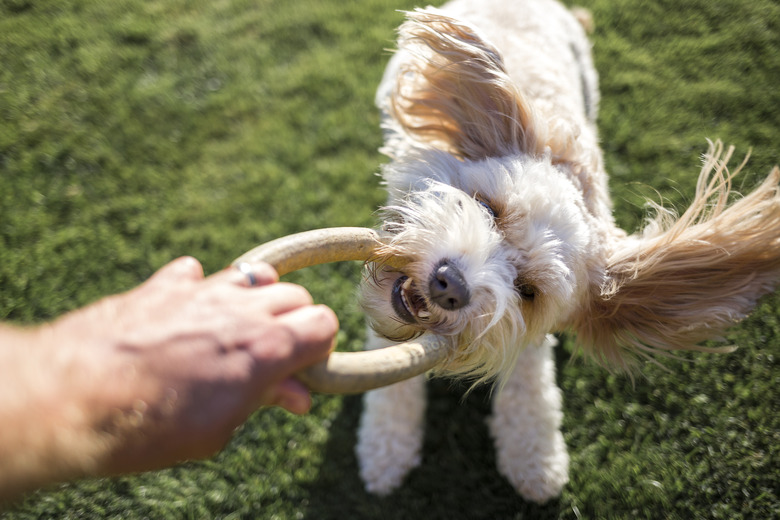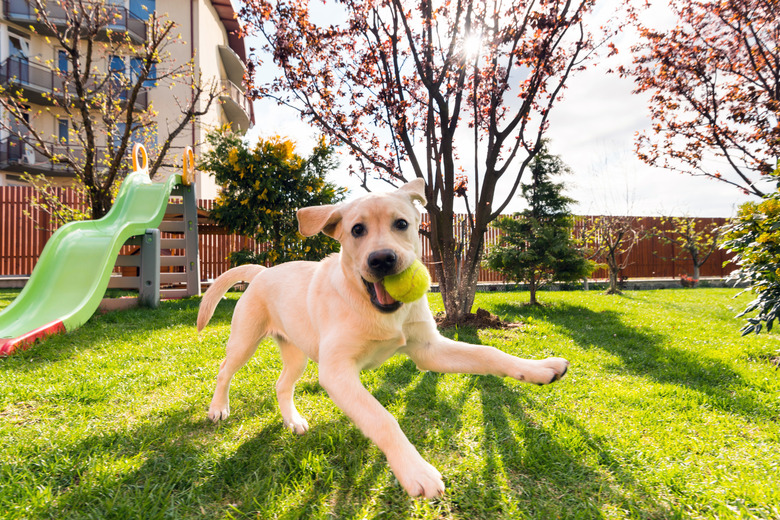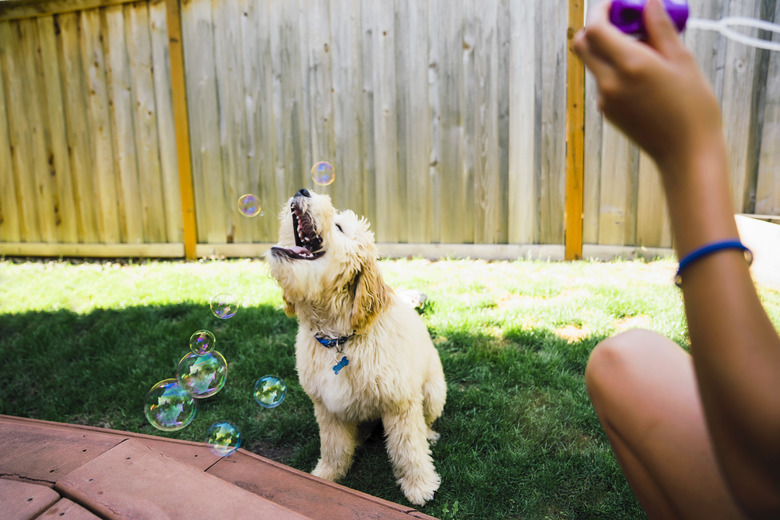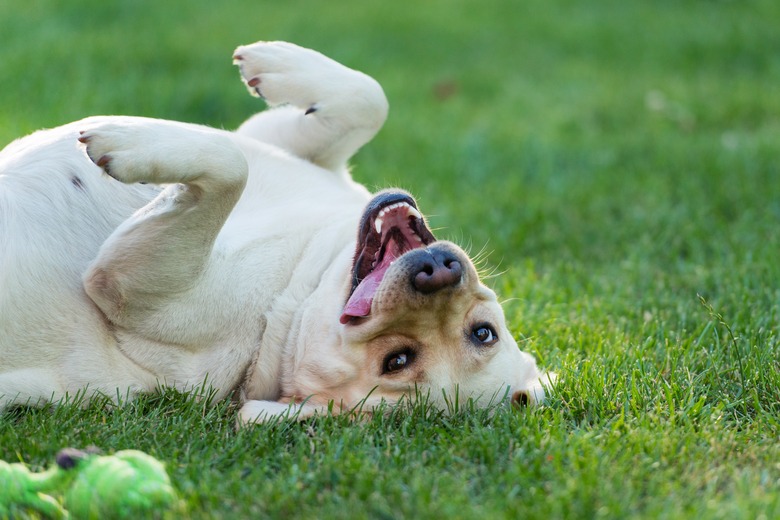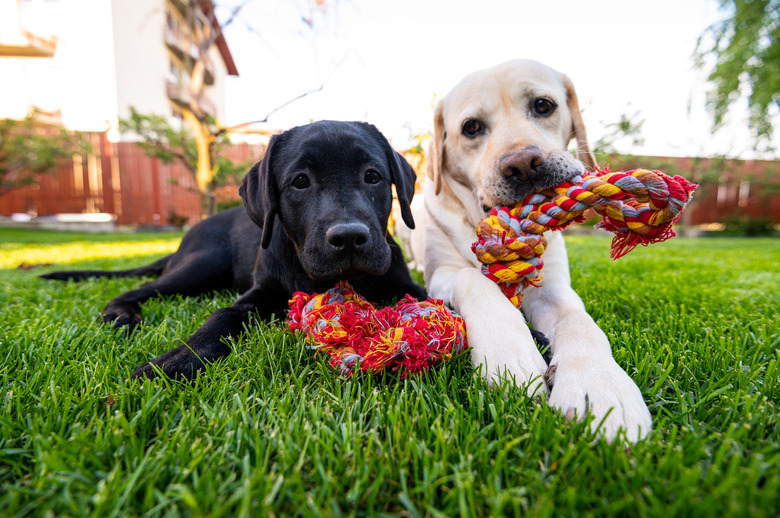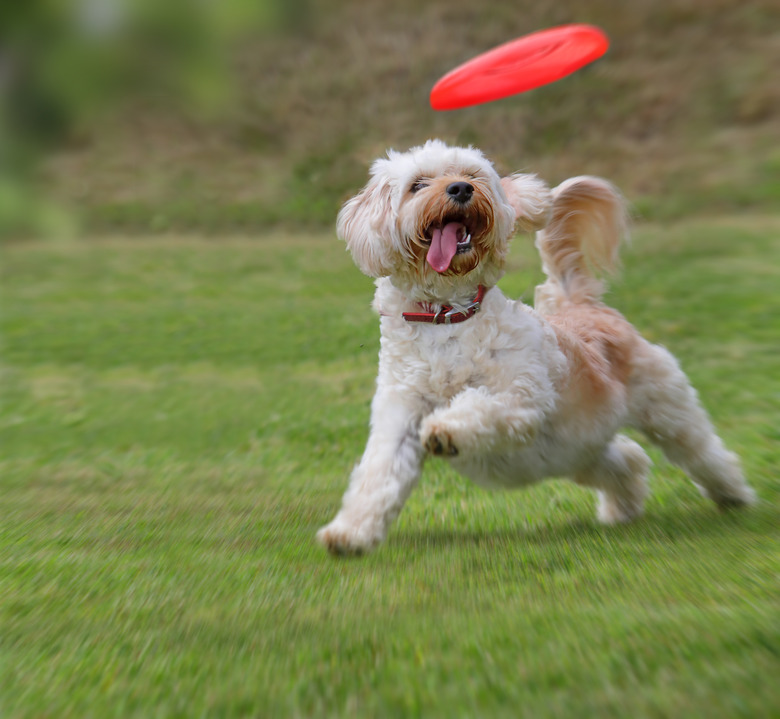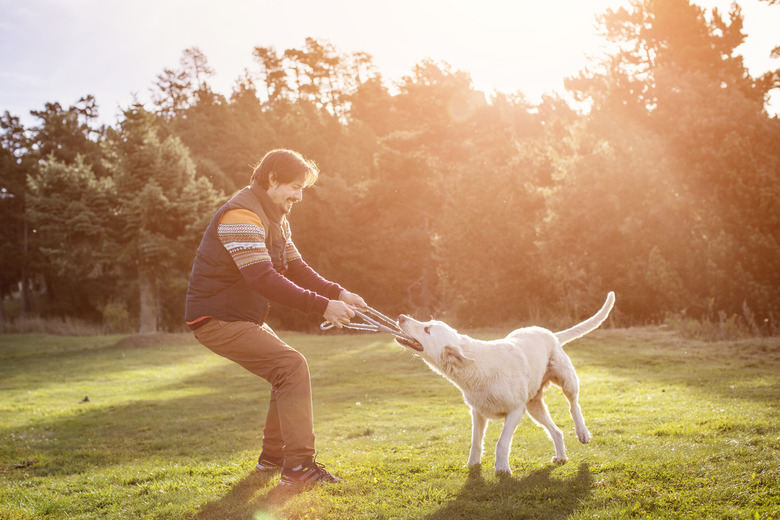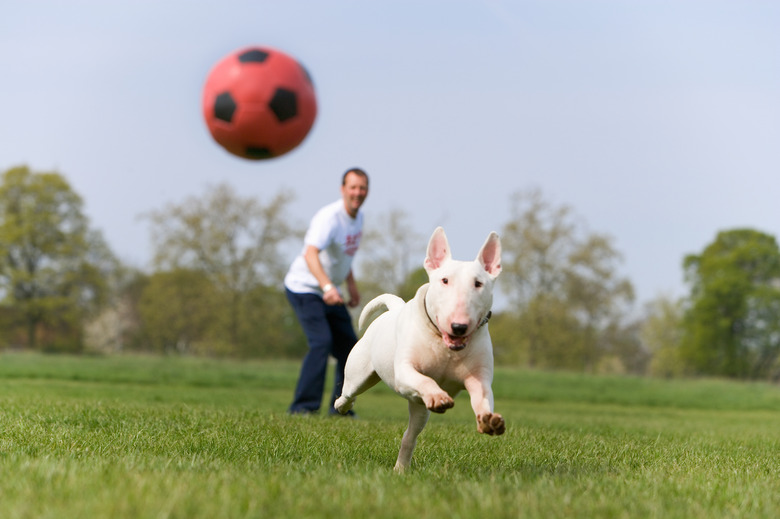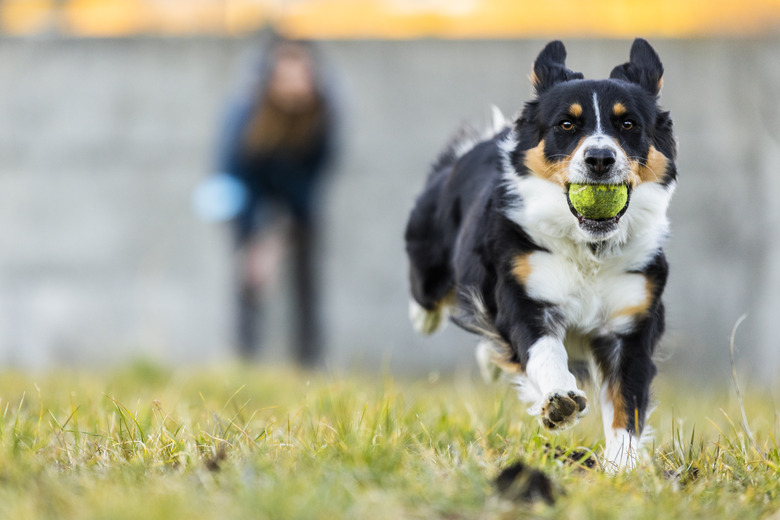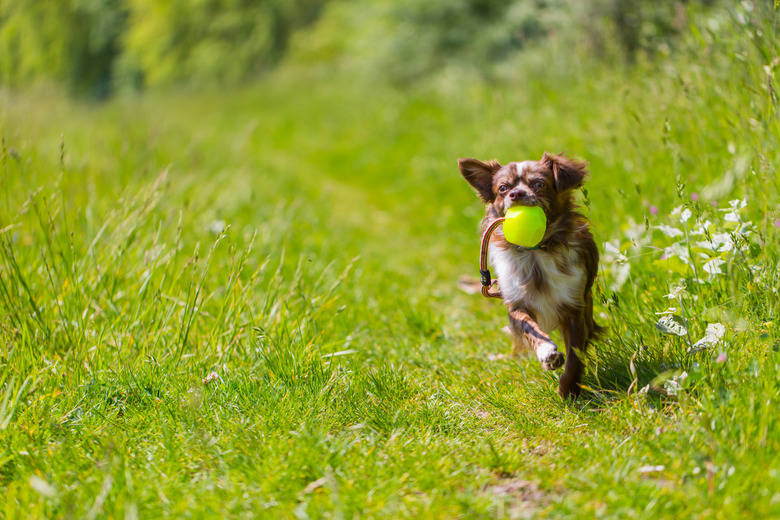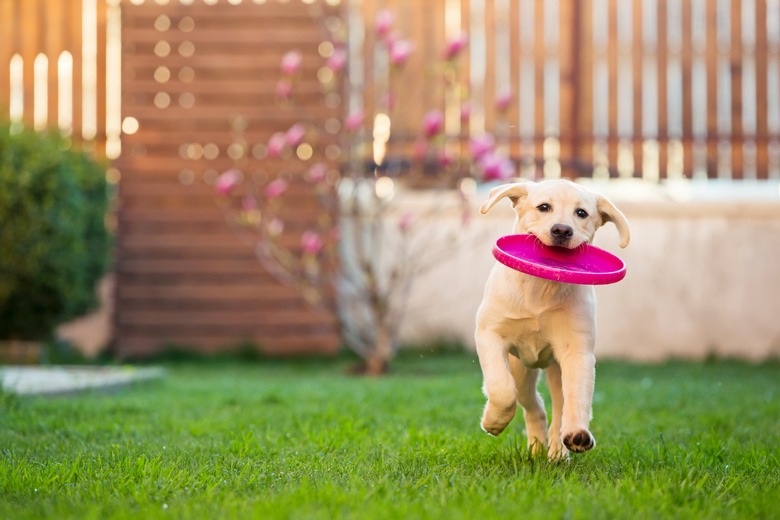5 Things You Should Never Do While Playing With Your Dog (And What To Do Instead)
Play is an important part of your dog's daily life, and play with you is a great way to connect with your dog. Playtime is fun for our dogs, and is an easy way for us to bond with them!
Play also helps your dog stay physically and mentally active, and helps maintain their quality of life. While you're playing with your dog, and encouraging your dog to spend more time playing, here are some dos and don'ts to consider:
Do: play the games your dog enjoys.
Do: play the games your dog enjoys.
When playing with your dog, it's important to seek out and engage in games that your dog is having fun with. If your dog isn't enjoying the game, find a different way to play with your dog. Some dogs like rowdy play, while others are more sensitive and need quieter games. Similarly, some dogs will play any games you want, while others have distinct preferences for games like fetch or tug. Some breeds or breed mixes like retrievers of all sorts may especially enjoy fetch. If you have a new dog, or haven't spent a lot of time playing with your dog you may need to experiment with different games to see what your dog likes best.
Don’t: force your dog to play.
Don't: force your dog to play.
Sometimes dogs aren't in the mood to play, and that's ok! Like any other aspect of positive reinforcement dog training, don't ever force or try to coerce your dog into engaging or playing.
If your dog doesn't respond to your invitation to start playing, give them a chance to rest and try to play later. If your dog doesn't want to play, they may be tired, not feeling well, busy doing something else they find more enjoyable in the moment, or just not in the mood. Try not to take it personally! Instead, occupy yourself with something else and try again later.
Keep play sessions short so your dog doesn't get worn out, and make sure to take breaks to let your dog rest between play sessions. If your dog never wants to play consider working with a professional dog trainer who can help to show you different games you and your family members can play with your dog.
Do: respect your dog’s body language.
Do: respect your dog's body language.
Your dog's body language is a great way to tell if your dog is having fun with a game. While playing, closely watch their body language and adjust your play style according to how your dog is physically responding.
Dogs use their bodies to communicate how they are feeling through their bodies and a loose and relaxed body language is a good sign that your dog is having fun playing with you. If your dog's body becomes stiff, or they display other signs of discomfort it's important to stop what you are doing right away.
Don’t: pick your dog up while playing tug.
Don't: pick your dog up while playing tug.
Tug is a great game to play with your dog, but don't pick your dog's body up off the ground by the tug toy while you are playing. Lifting your dog up by their mouth in play can be scary or uncomfortable. It can also cause injury to your dog's teeth, or orthopedic injuries. Instead, keep your dog's tug game on the ground, and let your dog control how hard they pull against you, instead of you pulling your dog. This can also help prevent accidental nipping as your dog can better see where the toy is.
Do: let your dog win!
Do: let your dog win!
You might have heard you should never let your dog "win" if you play tug-of-war, but this isn't true. The outdated idea was that if you let your dog win they were "dominating" you. However, dominance theories have been disproven when it comes to canine behavior. If your dog never "wins" their toy, the games will quickly become boring. Instead, make your games fun for both of you by taking turns about who wins while playing.
If you are struggling with nipping, dog bites while playing, it's a good idea to work with a professional dog trainer to help you assess for any behavioral problems, and come up with a training plan using positive reinforcement methods to teach bite inhibition and safer ways to play together.
Don’t: play too rough.
Don't: play too rough.
We never want to startle or scare our dogs while playing. Although some dogs like rougher wrestling, chase, and other games many dogs don't. These dogs can become frightened or shut down with this type of play. There is no need to play roughly with your dog unless it's a game that is safe and fun for both of you. Follow your dog's lead with how you play and keep your interactions gentle.
Do: provide lots of toys.
Do: provide lots of toys.
Toys are a great way to keep your dog's attention inspire your dog to play. Provide your dog with toys, and a wide variety of types of toys. Engaging your dog with toys allows your dog to safely and appropriately use their mouth while playing. Experiment with different types of toys to see what your dog likes best. Allow your dog to have access to toys, so they can use those toys to invite you to play when they are in the mood.
Don’t: tease your dog.
Don't: tease your dog.
Play is only enjoyable if everyone involved is having fun. When engaging your dog in play it's important not to tease your dog. This looks like bothering your dog while they are sleeping, grabbing or poking your dog in ways they don't like, showing your dog toys and treats, and never letting them get it. Teasing your dog won't inspire your dog to play with you and can harm your relationship by making your dog fearful and distrustful of you.
Do: keep your dog safe while playing.
Do: keep your dog safe while playing.
While playing with your dog, it's important to make sure that everyone is safe. Don't let your dog off leash to play unless you are in a fully enclosed area. Playing in an enclosed area or on a leash allows you to focus on having fun with your dog while making sure they don't get zoomies and run into traffic or approach anyone else.
Don’t: encourage jumping on hard surfaces.
Don't: encourage jumping on hard surfaces.
When playing with your dog, try to keep them game at ground level. Although many dogs are excellent jumpers, it's best to avoid incorporating leaping and jumping into your dog's regular play for the sake of their orthopedic health. Especially if you're not playing on a cushioned surface with traction like grass or carpeting, it's best to encourage your dog to keep four feet on the floor to prevent slipping or jarring joints.
The bottom line
The bottom line
Playing is one of the best ways that we can bond with our dogs and spend quality time together. In order to make sure that both you and your dog are having fun, it's important to play the types of games that your dog enjoys and watch your dog closely to make sure they are continuing to have fun as you play. Safety should always be a priority from playing in safe areas, to taking precautions not to injure your dog while playing with you.
